- Log in
-
- Sydney Overseas Office
- London Overseas Office
- Toronto Overseas Office
- Los Angeles Overseas Office
- New York Overseas Office
- Ulaanbaatar Overseas Office
- Dubai Overseas Office
- New Delhi Overseas Office
- Manila Overseas Office
- Jakarta Overseas Office
- Hanoi Overseas Office
- Kuala Lumpur Overseas Office
- Singapore Overseas Office
- Bangkok Overseas Office
- Map
- Sydney Overseas Office
- London Overseas Office
- Toronto Overseas Office
- Los Angeles Overseas Office
- New York Overseas Office
- Ulaanbaatar Overseas Office
- Dubai Overseas Office
- New Delhi Overseas Office
- Manila Overseas Office
- Jakarta Overseas Office
- Hanoi Overseas Office
- Kuala Lumpur Overseas Office
- Singapore Overseas Office
- Bangkok Overseas Office
Travelogues
-
-
-
[Incheon, STELLAR MARINA HOTEL] A city with history
-
06/04/2019
1.4K
-
0
0
-
-
-
-
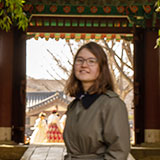
Korea Travel Qrator
Shangina Victoria
: Russia


Korea Travel Qrator
Shangina Victoria
: Russia
Incheon –
a city with
historyMarch 13-14, 2019
#Incheon #Korean history #Chinatown #operation CHROMITE
* Korea Travel Qrator : A travel expert who explores Korea Quality-certified facilities and conveys the feeling of travel through vivid experience contents.
Incheon Landing Operation Memorial Hall,
Incheon Open Port Modern Architecture Exhibition CenterviewFirst Church,
Prayers monument,
Incheon ChinatownviewTraveler's
Roomview01Incheon Landing Operation Memorial Hall, Incheon Open Port Modern Architecture Exhibition Center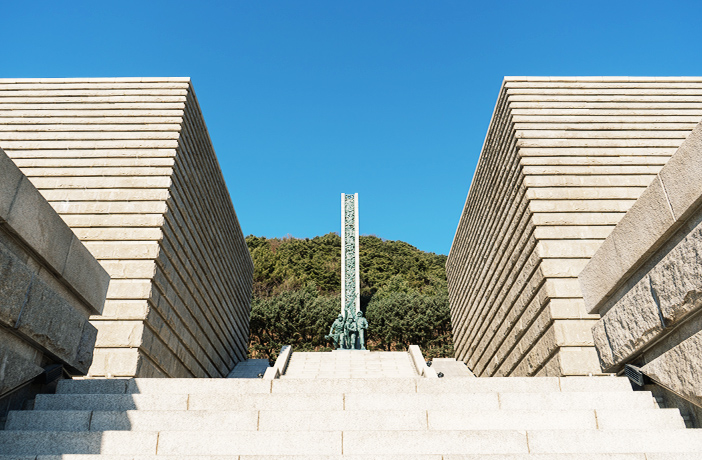
The Memorial Hall for Incheon Landing Operation
There are many interesting cities in South Korea outside of Seoul. You may have heard of Incheon if you have flown through Incheon International Airport. But do you actually know anything about the city? Before visiting, I also knew nothing of Incheon besides the airport. But it’s a remarkable city in terms of its history - Incheon Bay is the site of the Battle of Chemulpo Bay (February 9, 1904), the Battle of Incheon (September 10-19, 1950), and others. The Battle of Incheon was a turning point in the Korean War. The victory of the U.S. resulted in a strategic reversal in favor of the United Nations forces.
As someone who is very interested in Korean history, I decided to take the time to learn more about the Korean War and the Battle of Incheon, so I headed to the Memorial Hall for the Incheon Landing Operation.
As usual, I used the Kakao Maps application to find my way to the museum. I strongly recommend using either this application or Naver Maps in Korea, as they both show bus schedules in real-time. However, as both applications require an Internet connection and cannot be downloaded or accessed offline, I suggest that you buy a SIM card or mobile internet contract if necessary, or rent a Wi-Fi egg device. These services can be acquired at the airport or any tourist destinations, such as Myeong-dong or Dongdaemun, where most staff can communicate in many languages.
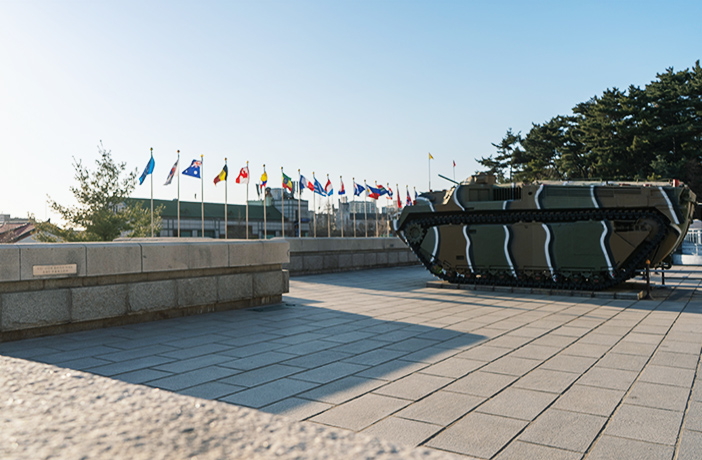
Tank in front of the Memorial Hall for Incheon Landing Operation
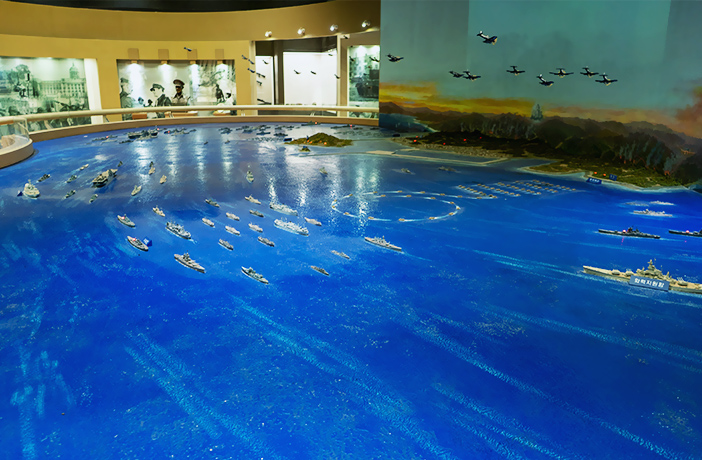
Miniature layout of the landing operation
Upon arrival at the museum, I found that it has both indoor and outdoor exhibitions. The open-air portion of the museum exhibits military equipment such as tanks and artillery, as well as sculptural depictions of battle scenes.
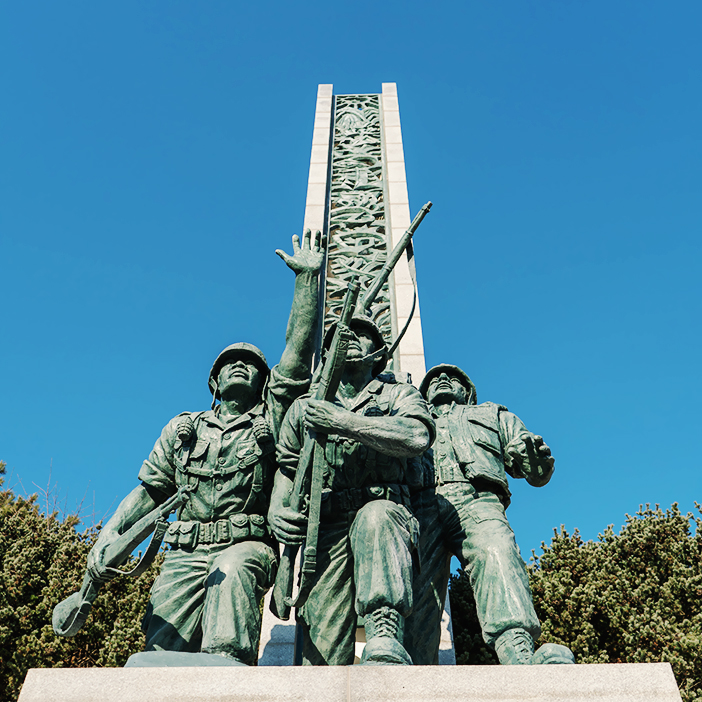
Incheon Landing operation statue
The indoor exhibit tells the story of Operation CHROMITE, the code name for the Incheon Landing Operation, of which General Douglas A. MacArthur was the hero. The exhibit describes in detail the planning and initiation of the operation, and you can see the official plan, equipment, and military uniforms. This museum is a must-see for anyone interested in Korean history and especially for those interested in the Korean War.
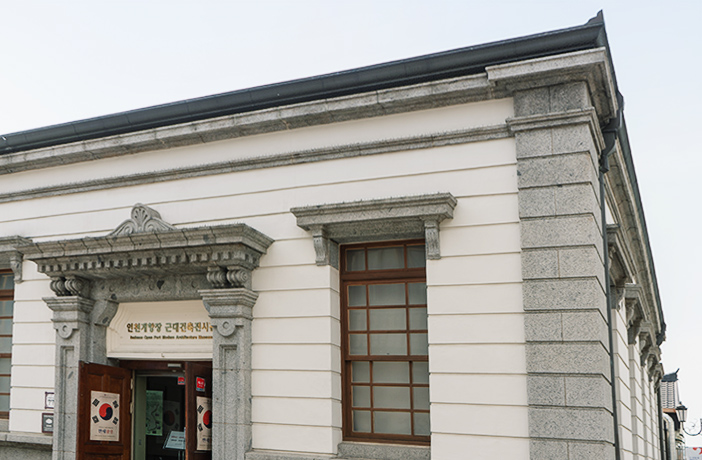
Korean history in the Incheon Open Port Modern Architecture Museum
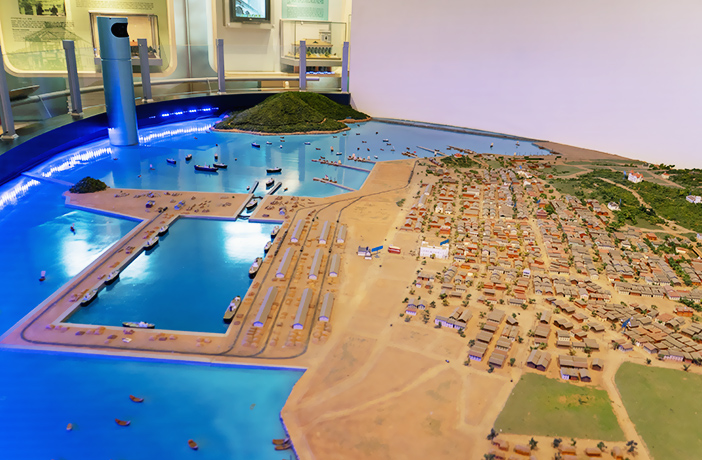
Miniature port and city layout that portray the city in the beginning of 20th century
Incheon holds an important place in history not only in terms of its military history and strategic location, but also as the main port of immigration to Korea. In the 19th century, while China and Japan were opening their borders to the world, Korea remained conservative, not signing any international treaty until the 1876 treaty with Japan. Under Japanese influence, in 1883 Incheon Port was opened in Chemulpo Bay. The history of the port is exhibited in the Incheon Open Port Modern Architecture Museum, which features a miniature port and a historical layout of the city. It’s fascinating to see how Incheon has changed since then.
02First Church, Prayers monument,
Incheon Chinatown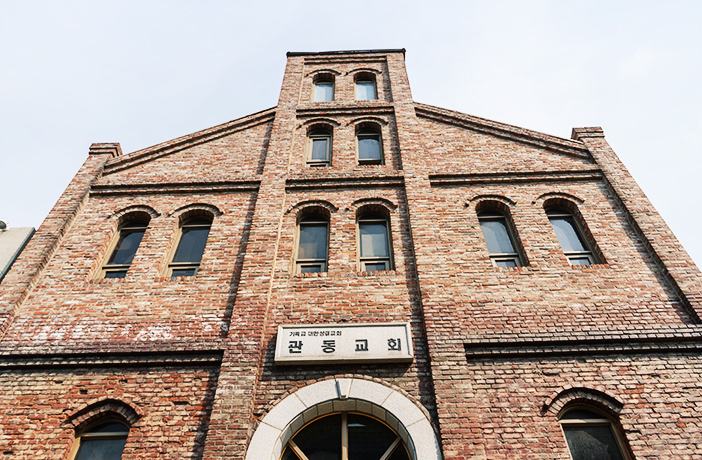
First church founded by missionaries
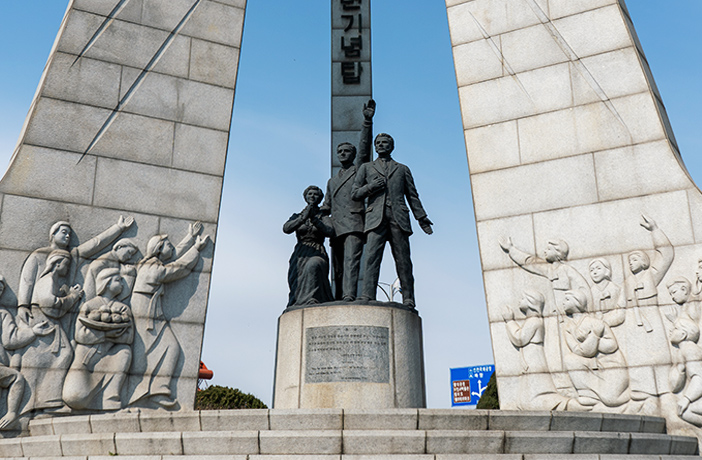
“Prayers” monument in honor of first missionaries
Some of the foreigners arriving at the port were Christian missionaries. Historically, missionaries played a crucial role in developing an educational system in Korea, organizing schools, activities, and churches for locals. Thanks to their efforts, many people who could not afford formal education - as it was generally only available to the children of aristocratic families - were able to learn to read and write, and had a greater chance to increase their social status. Missionaries also went on to establish two of the three top universities in Korea. A monument in honor of the missionaries stands in Incheon, depicting three Christians standing among Korean people and praying for them.
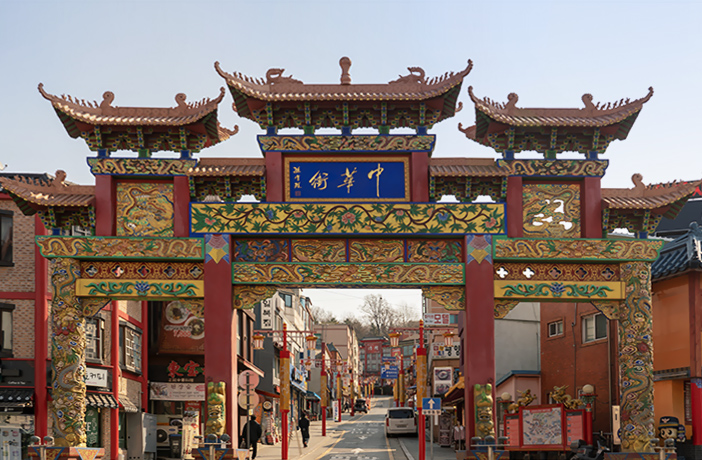
Gates to Incheon Chinatown
In addition to missionaries, Incheon became home for many Chinese immigrants. Korea began official trade with China with the China-Korean Treaty of 1882, and since then many Chinese people came to Korea via Incheon Port, with many of them deciding to reside permanently in Incheon, forming the largest Chinatown in Korea.
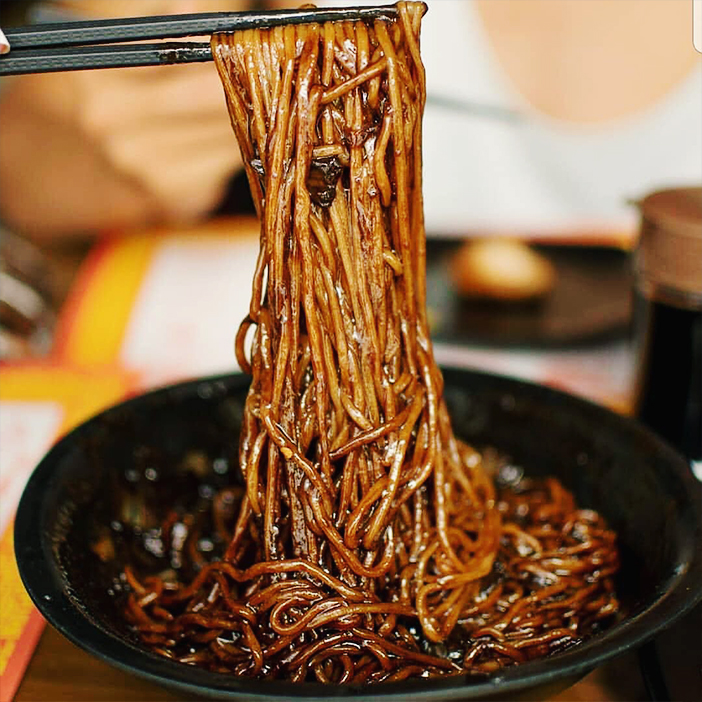
Jjajangmyeon
The ability to live comfortably in a foreign country and maintain their traditions enabled Chinatown to develop a unique culture, making it a popular destination for locals and tourists alike.
However, Chinatown is most famous for its food, notably its innovative Korean-Chinese dishes such as jjajangmyeon, or black-bean noodles, derived from Shandong zhájiàngmiàn. It has even become a tradition to eat these noodles on April 14th, the last day of the “love cycle” days. (February 14th is Valentine's Day, when girls give candy to boys; March 14th is White Day, when boys give candy to girls; and April 14th, Black Day, is for single people to eat black bean noodles). Jjajangmyeon is also popular among students, as it tends to be cheap and filling.Incheon’s position as a “gate to Korea”, initially by sea and now by air, has afforded it a very unique history, imbued with the mixed culture of travelers and immigrants from all over the world who enriched both the city and Korea with their traditions, ideologies, and tastes.
03Traveler's Room :
Great spacious room for very reasonable price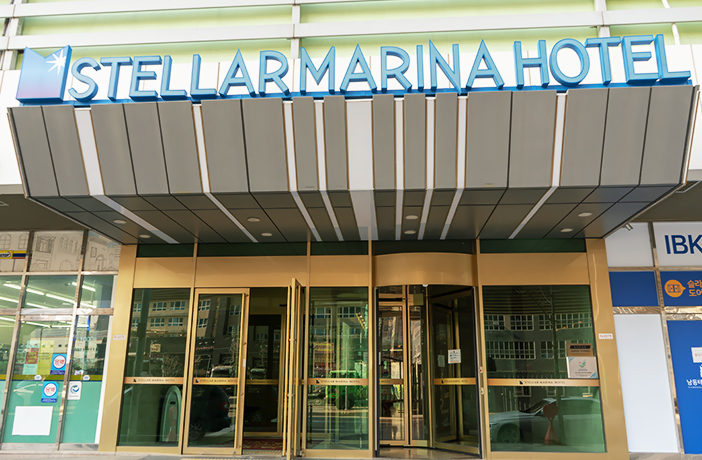
The hotel sign
I decided to stay in a high-quality yet affordable hotel near the coastal area. In Seoul, it’s quite difficult to find a hotel with a good price yet a nice view, interior, and location. But in Incheon, hotel prices are relatively cheaper. I chose the Stellar Marina Hotel for its location and its nice view of the port area.
Getting to the hotel by subway is quite easy, as it is located just a five-minute walk from Hogupo Station. There are also many cafes nearby, some of which are open for 24 hours, a welcome treat after a day-long city exploration, whereas many cafes close at 11 pm.My room was on the highest floor, and had the best view in the hotel. The room itself was quite large and had everything I needed - a nice bed, an air conditioner that also doubled as a heater, a fridge, a shower, and a TV. It was a comfortable place to relax at the end of the day.
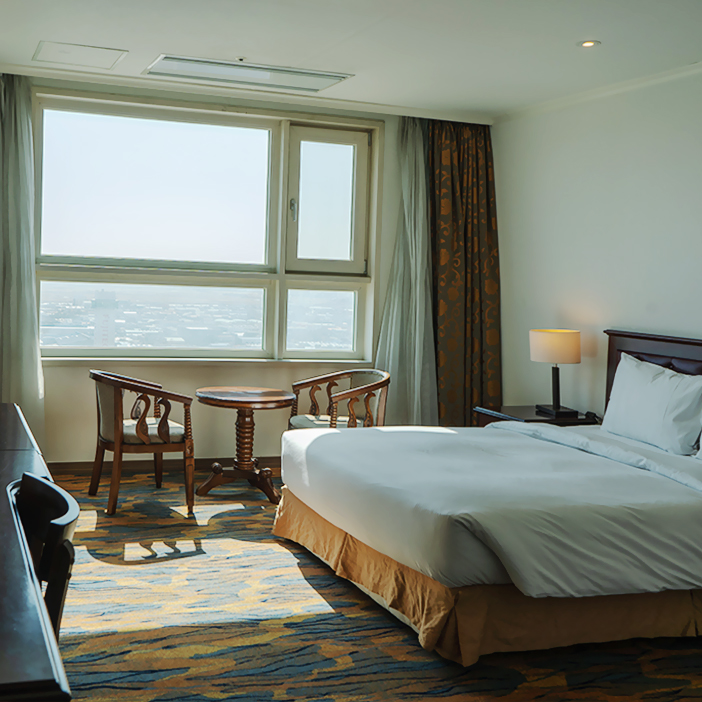
Stellar Marina hotel room view
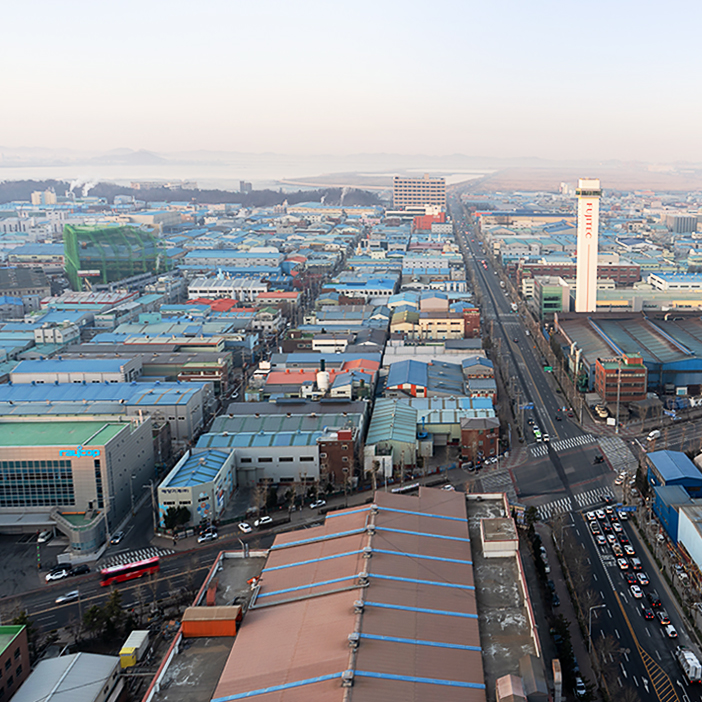
Oustanding view from the room window
The hotel also has a small gym and a breakfast buffet. You can also find a convenience store at the entrance, which was a nice bonus. The staff could also speak decent English and were very friendly and helpful.
Hotel InformationHotel Information - Hotel name, Website, Address, Price, Tel, Check in/out Hotel name Stellar Marina Hotel Website http://www.stellarmarinahotel.com Address 51 Nonhyeon-ro 46beon-gil, Nonhyeon 2(i)-dong, Namdong-gu, Incheon Price 73,080 won Tel (+82) 32-426-1100 Check in/out 2PM / 11AM Korea Travel Qrator's TipDon’t bother yourself and buy evening snacks in advance. There is convenience store right in the building.
1. This column was last updated in March 2019, and therefore information may differ from what is presented here. We advise you to check details before visiting.
2. This travelogue is written by Shangina Victoria. All contents are opinions based on my own experiences.
-







